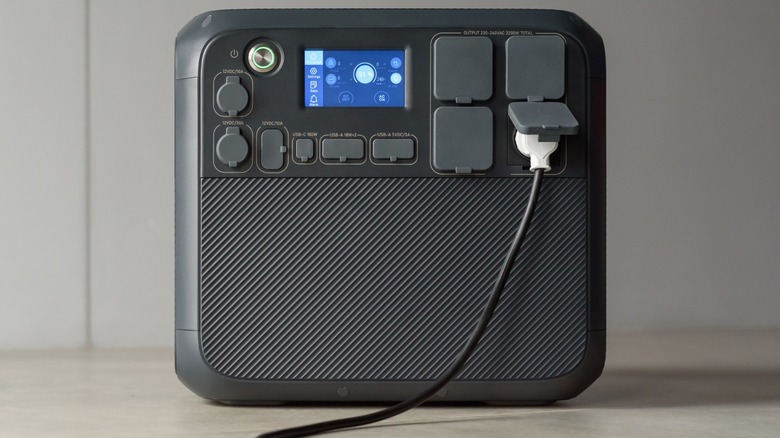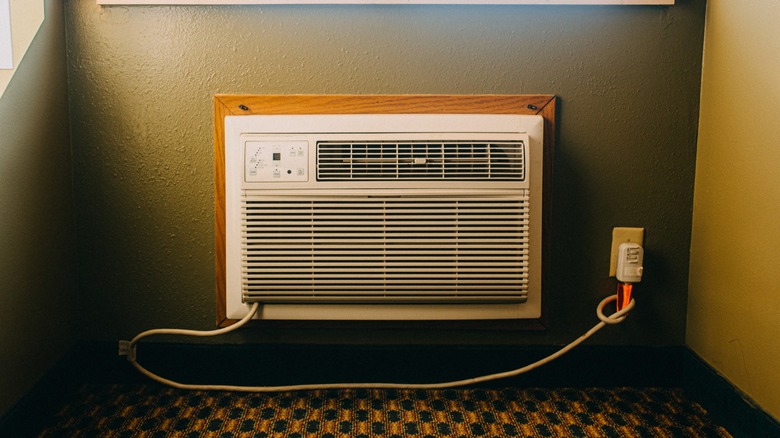Can A Portable Power Station Run Your AC In An Emergency?
We may receive a commission on purchases made from links.
A portable power station (PPS) is by no means a back-up generator. Many of the higher end (portable) ones have a maximum battery capacity range between 1,000Wh to 2,000Wh, continuous output of 1,000W, and peak surge of up to 4,000W. The Bluetti AC180, for instance, is a well-recommended portable power station, and it has a 1,152Wh capacity paired with 1,800W of continuous output. That means that they're usually better off powering small fridges, internet routers, TVs and other low-to-medium wattage appliances and devices.
Air conditioners, on the other hand, are very demanding appliances. A small, relatively weak, portable AC, such as the Black+Decker BPACT12HWT will pull more than 1,000W each hour and would need at least 1,500W just to start. In fact, it's actually rated for 3,516W, so a PPS as powerful as the AC180 could be underpowered in some rare circumstances. Plus, even when it manages to run, it would most likely last less than an hour.
If you're really desperate, a good power station with a 1,000Wh battery capacity of and output exceeding 2,000W could power an AC for a short time. If you have less than this, we wouldn't recommend it. There are different kinds of ACs, though, so we'll do a quick rundown of what you should expect.
What kind of AC can a portable power station actually handle?
As you may have already guessed, some ACs would do better with a portable power station than others. Generally speaking, the smaller and more self-contained the AC, the better your chances. Window units and portable ACs that draw less than 1,000W of continuous output are your safest bet. A typical 5,000 to 8,000 BTU window unit, might pull 450W to 800W once running with a brief initial surge of up to 1,200W. For example, a Frigidaire FFRA051WAE is a 5,000 BTU AC that draws around 450W while running and would require a startup surge up to 1,000W. It's the perfect AC for a 1,000W PPS like the Jackery Explorer 1000 (see our SlashGear review) or a 2,000W EcoFlow Delta Max (we also have a review on that) if you want more running time.
Where it gets tricky is with RV air conditioners, which often require 1,500W to run and sometimes as much as 3,600W to start. There are technically portable use cases, but they'd demand more power than window units and many standalone portable AC units. The best thing to do is consult the user manual, browse the manufacturer's website for specs, or reach out to customer support for advice.
That said, the absolute worst pairing is with a central AC system; these typically draw upwards of 3,000W continuously. You should only consider this if you're sure of how much power your central AC is using, and you have a really powerful portable power station — like an Anker Solix F3800 Plus that does up to 6,000W in output and has a 3,840Wh capacity.

